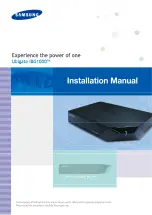
service level, which means that each individual service must have
its security settings (Authentication, Authorization, and Encryption)
set independently.
Hardware Tab
The
Hardware
tab provides basic information about the Bluetooth hardware installed in this
computer. In some cases, it allows you to have access to the
Advanced Settings dialog box
. In
this tab, you will see the following sections:
Devices:
Name:
the name of the device, e.g.,
Bluetooth Device
.
Type:
the type of device you have, e.g.,
USB
.
Device Properties:
Manufacturer:
the name of the company that made the device
you selected in the Devices section of this dialog box.
Firmware Revision:
the manufacturer’s firmware version number.
Device Status:
indicates if the device is operating properly or if
there is a problem or conflict.
Device Address:
displays the Bluetooth Device Address (BDA or
BD_Addr) programmed into this device when it was manufactured.
HCI Version:
the version number of the Bluetooth Specification
that the Host Controller Interface (HCI) complies with.
HCI Revision:
the revision number of the Bluetooth Specification
that the Host Controller Interface (HCI) complies with.
LMP Version:
the version number of the Bluetooth Specification
that the Link Manager Protocol (LMP) complies with.
LMP Revision:
the revision number of the Bluetooth Specification
that the Link Manager Protocol (LMP) complies with.
LMP Sub Version:
the sub-version number of the Bluetooth
Specification that the Link Manager Protocol (LMP) complies with.
Advanced:
Advanced:
this button displays the
Advanced Settings dialog box
,
allowing you to select the country code and transmission power
settings.
Note:
This option is not available on all systems.
Hardware Tab – Advanced Settings dialog box
26















































